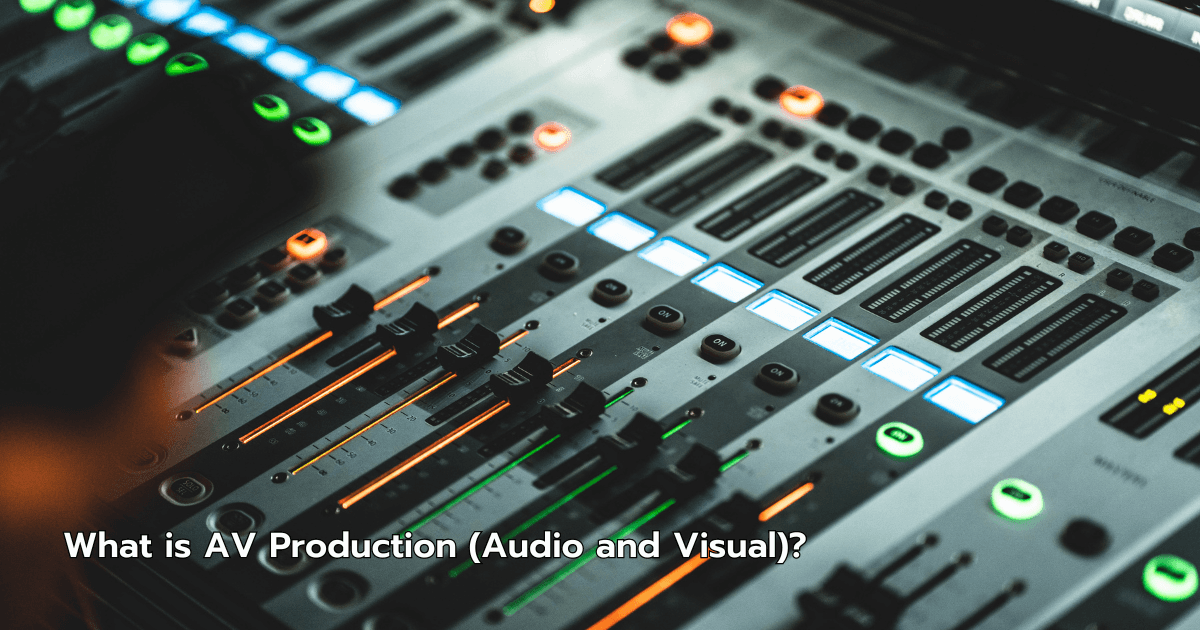What is AV Production (Audio and Visual)?

Audio-Visual (AV) production is very important for event organizer. AV production refers to the process of creating content that combines both sound and visual elements to convey a message, tell a story, or entertain an audience. This field encompasses a wide range of activities, from recording and editing audio and video to the integration of these elements into cohesive multimedia presentations. Here’s a closer look at what AV production involves and why it’s important.
Key Components of AV Production
1. Audio Production
- Recording: Capturing sound using microphones and other audio equipment. This can encompass elements such as spoken dialogue, musical scores, sound effects, and background noises
- Mixing: Combining different audio tracks to ensure they work well together. This involves adjusting levels, equalization, and adding effects.
- Editing: Cutting and arranging audio to fit the desired timeline or narrative. This may include removing unwanted noises or enhancing certain audio elements.
2. Visual Production
- Filming/Recording : Capturing video footage using cameras or other visual recording devices. This involves planning shots, setting up lighting, and directing actors or subjects.
- Editing : Cutting and arranging video clips to create a coherent story or message. This includes adding transitions, special effects, and synchronizing video with audio.
- Animation and Graphics : Creating visual elements that may not be captured on camera, such as animated sequences, graphics, and text overlays.
3. Integration
- Synchronization : Ensuring that audio and visual elements are perfectly aligned. This is crucial for creating a seamless viewing experience where dialogue matches lip movements, and sound effects align with visual actions.
- Final Mixing and Mastering : Combining all elements into a final product. This includes balancing audio levels, refining visual quality, and ensuring the overall production meets technical standards.
Applications of AV Production
- Entertainment : Film, television, and online video content rely heavily on AV production. It’s essential for creating movies, TV shows, music videos, and streaming content.
- Corporate : Businesses use AV production for training videos, promotional materials, and corporate presentations. It helps in communicating messages effectively and engagingly.
- Events : Live events such as concerts, conferences, and seminars often employ AV production for live streaming, presentations, and audience engagement.
- Education : Educational institutions use AV production to create instructional videos, online courses, and multimedia learning materials.
The Importance of AV Production
AV production is vital in today’s media-rich world. It helps to:
- Enhance Communication : By combining audio and visual elements, AV production makes information more engaging and easier to understand.
- Create Impact : Well-produced AV content can leave a lasting impression and effectively convey emotions or messages.
- Ensure Quality : Professional AV production ensures high standards of audio and visual quality, which is crucial for maintaining audience interest and conveying professionalism.
For more information on the importance of AV production, see ‘The Importance of Audio-Visual Production in Events.
In summary, AV production is a multifaceted field that plays a crucial role in modern media. Whether for entertainment, corporate, educational, or personal use, effective AV production combines audio and visual elements to create compelling and impactful content.
